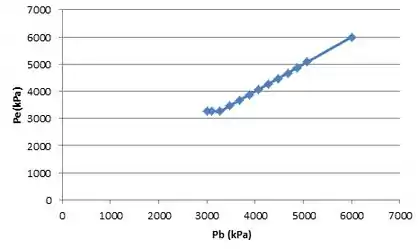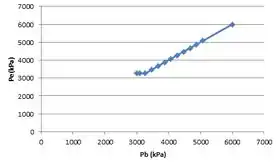Vapor a 6,0 MPa e 700 K entra em um bocal convergente com velocidade desprezível. A área da garganta do bocal é de 8 cm². Assumindo um fluxo isentrópico, faça um gráfico da pressão de saída, a velocidade de saída e a vazão em massa através do bocal versus a contrapressão para . Trate o vapor como um gás ideal com .
Passo 1
Vamos assumir que o fluxo neste caso é constante, unidimensional e isentrópico e o ar se comportará como gás ideal !!
Aqui é muito importante nós acharmos a pressão crítica!! Porque para todas as contrapressões inferiores a , a pressão no plano de saída do bocal é igual a ela, ou seja:
Então aqui nós já achamos uma forma de calcular a variação da pressão na saída !!
Lembrando que:
A temperatura e a pressão de estagnação, assumindo a velocidade desprezível, são dadas por:
Para o vapor nós temos que:
E que:
Então:
E a pressão de estagnação:
Então:
Fazendo um gráfico com essas informações:

Passo 2
A temperatura é dada por:
Então:
Como queremos a velocidade basta nós lembramos da fórmula:
Igual fizemos para a anterior:
E no gráfico:

Passo 3
E para finalizar, a vazão mássica:
Então:
E assim:

Aguardo vocês na próximaa !!!
Resposta

